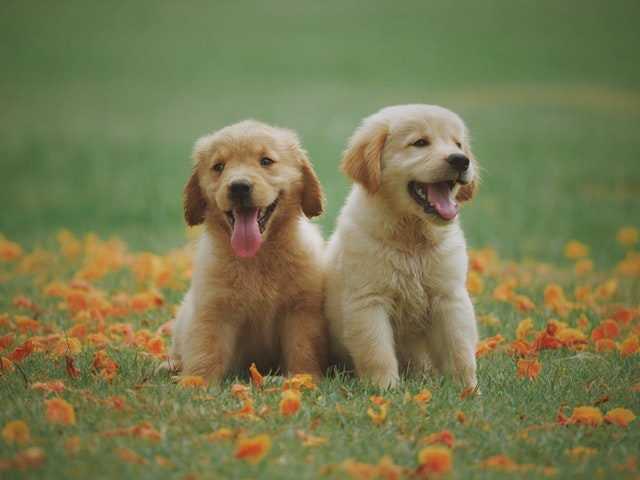When you bring home a puppy or young dog you will be excited about developing a relationship with your new pet. Unfortunately, people who do not prepare adequately to train their new companions will experience frustration rather than reward in the years ahead.
Training a dog to behave appropriately can be hard work, but it is an important step toward a positive family relationship. Dogs become stressed if they are unsure where they fit into their new pack. If you approach the task with enthusiasm and you follow through with routines, you and your companion will develop trust. Try these basic-training suggestions during your dog’s first months.

Security and Happiness
In a sense, training puppies is similar to raising children. Initially focus on developmental stages rather than throwing everything at them at once. Before beginning obedience training, create a foundation that you can build upon based on maturity and previous training exercises; you must create structure. Extending this analogy, think about a good educator’s approach to a new class. The teacher strives to create an environment of trust during the first days using shared rules and guidelines, even before delving too deeply into academics. The teacher subtly socializes the students and provides a feeling of safety.
Puppies also need structure and socialization early on. Set up routines to last the remainder of their lives. These routines include feeding schedules, voiding locations, walking and exercising timings, and sleeping timetables. Be aware some of these will be adjusted over time; for example, dogs can extend the time between potty breaks as they mature. These routines are necessary since you will be toilet training and feeding your puppy from day one. Don’t forget to schedule routine play experiences too, arranging gatherings with other dogs. This activity is critical for positive social development.
At Home in a Crate
Understandably, some people believe dog crates to be confining and cruel. After all, why would dogs desire to be penned in? In reality, crates provide a sense of security akin to that of proper dens. In addition to their stress-reducing qualities, crates serve two practical purposes: They keep your puppy out of trouble while you are unable to provide supervision, and they reduce voiding accidents since dogs resist going to the bathroom where they sleep.
It may take two weeks or more for the puppy to become acclimated to the crate, but soon the dog will step in upon command and eventually choose it as a preferred resting location. Make certain to select the correctly-sized crate for your growing dog, and purchase a bed and comfort toys to place within.
Proper Situational Responses
A well-grounded dog is one that is ready for obedience training stages. The result of good obedience training is that your dog responds to your signals rather than willfully choosing to ignore them. This step is critical to ensuring your dog responds safely and appropriately to strange dogs and people, as well as to your commands; you must eliminate biting responses, in particular. Ideal training involves a combination of redirection actions and positive reinforcement.
Barking reduction best exemplifies this. Create signal words you will use to command quiet. When the dog sounds off inappropriately, use a tool such as a BarxBuddy remote, a device that produces an ultrasonic signal the dog hears, which will cause the barking to stop – note that your dog should be at least six months old before you send this intentionally-annoying sound his way. When the dog stops barking at your command on other occasions, provide treats and verbal praises. Use this sort of dual-pronged approach wherever it makes sense.
So much goes into properly training puppies and young dogs to fit into a new home. You may consider hiring a good trainer if you need the support. In any case, employing consistent follow-through will result in a good doggy for life.
